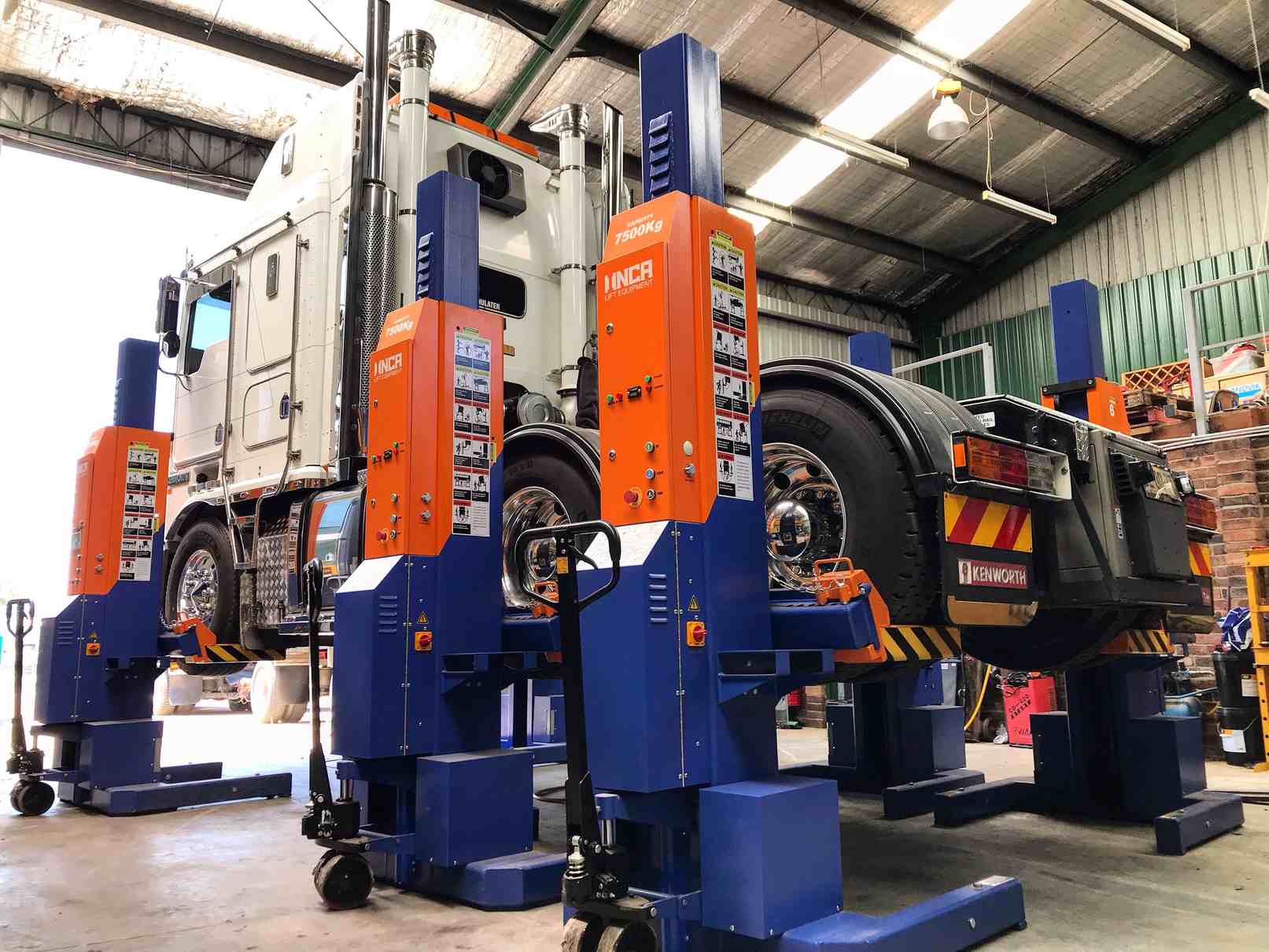In the heavy-duty vehicle maintenance and repair industry, efficiency, safety, and equipment reliability are key factors that drive operations. Among the many tools used, mobile column hoists stand out as an essential asset, especially when working on large vehicles like buses, trucks, and other commercial vehicles. Mobile column hoists offer versatility, flexibility, and enhanced safety. However, as with any piece of machinery, getting the most out of these hoists requires following certain best practices. Below, we outline some of the most important practices to ensure both safety and optimal performance when using mobile column hoists.
1. Routine Maintenance and Inspections
Regular maintenance and inspections are crucial to keeping mobile column hoists in top working condition. Periodic inspections, as outlined by the manufacturer, help detect potential issues like hydraulic leaks, cracks, or wear on the lifting pads. This proactive approach can prevent unexpected breakdowns, which can lead to downtime and costly repairs.
It is also important to keep the hoists clean, especially the moving parts, to prevent debris from causing damage or operational inefficiency. At Inca, we recommend performing a thorough inspection after each use, and a more detailed inspection on a monthly basis.
2. Adhering to Load Capacity Limits
Every mobile column hoist has a designated weight capacity. Exceeding this limit, even by a small margin, can compromise the structural integrity of the hoist, creating unsafe working conditions. Always ensure that the combined weight of the vehicle and any additional load does not exceed the recommended weight limit.
Before beginning any lift, operators should double-check the vehicle's weight and refer to the hoist’s capacity clearly labeled on each column. This simple step can prevent dangerous situations that may arise from overloading the system.
3. Proper Training for Operators
Mobile column hoists are sophisticated pieces of equipment, and improper use can lead to accidents or equipment damage. It is essential that anyone operating a mobile column hoist is fully trained and understands the machine’s functions and safety features.
At Inca, we emphasize training as a critical part of the user experience. It is advisable to implement a structured training program that includes both theoretical and practical components, ensuring that your operators know the proper lifting techniques, safety procedures, and emergency protocols.
4. Utilize Hoist Accessories and Tools
Mobile column hoists come with various accessories designed to enhance their functionality and safety. These accessories include axle stands, vehicle support stands, and jack adapters. Using the correct accessories can improve safety during complex lifts, particularly when dealing with heavy-duty vehicles.
For example, axle stands provide additional support and stability for vehicles during extended repair sessions, reducing the risk of the vehicle shifting or falling. Always use accessories that are specifically designed for the hoist and vehicle in question.
5. Follow Manufacturer Guidelines and Local Regulations
Each manufacturer provides specific guidelines for operating mobile column hoists, including instructions for setup, maintenance, and usage. These guidelines should always be followed closely to ensure optimal performance and to avoid voiding warranties or breaching safety standards.
Additionally, it is important to comply with local safety regulations and standards. These regulations are designed to ensure workplace safety and should be incorporated into your company’s standard operating procedures.
6. Safety First: Always Use Locking Mechanisms
Most mobile column hoists come equipped with built-in safety features like mechanical locks that engage automatically once the vehicle is lifted to the desired height. Never bypass or disable these safety features, as they are essential for maintaining the hoist’s stability during maintenance work.
Always engage the locking mechanism before working underneath a vehicle. This ensures that, in the event of a hydraulic failure, the vehicle remains safely elevated, protecting workers from injury.
Conclusion
Mobile column hoists offer a significant advantage in heavy-duty vehicle maintenance, but only when they are used correctly and safely. By following these best practices—ranging from routine maintenance and operator training to using proper accessories—you can maximize the efficiency and lifespan of your mobile column hoists.
At Inca, we prioritize not only the quality of our products but also the safety of those who use them. By following these guidelines, you’ll ensure your hoists continue to provide reliable, safe performance, allowing you to focus on delivering excellent service to your customers.
